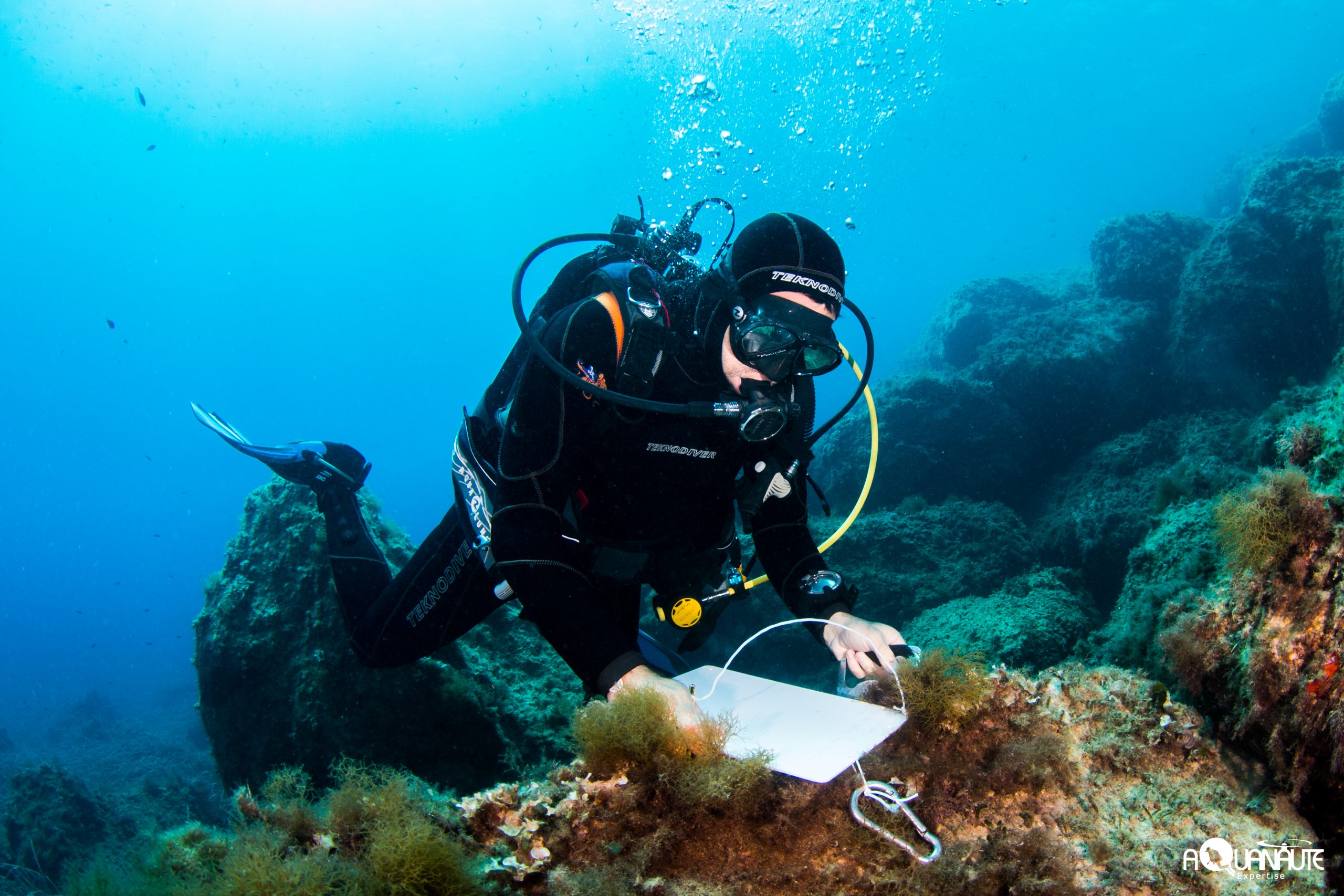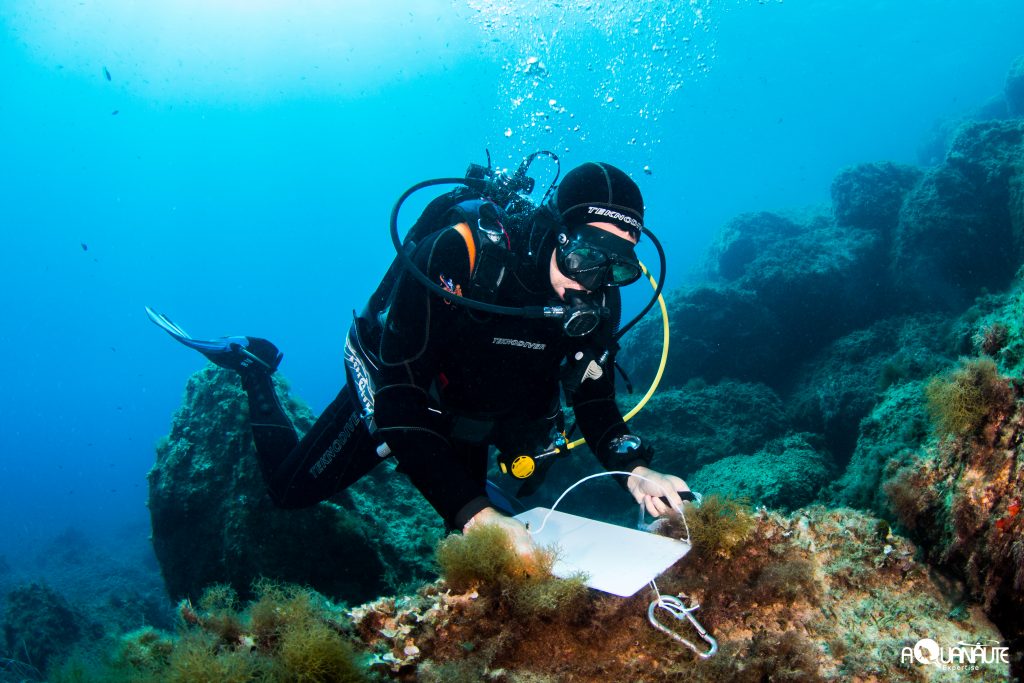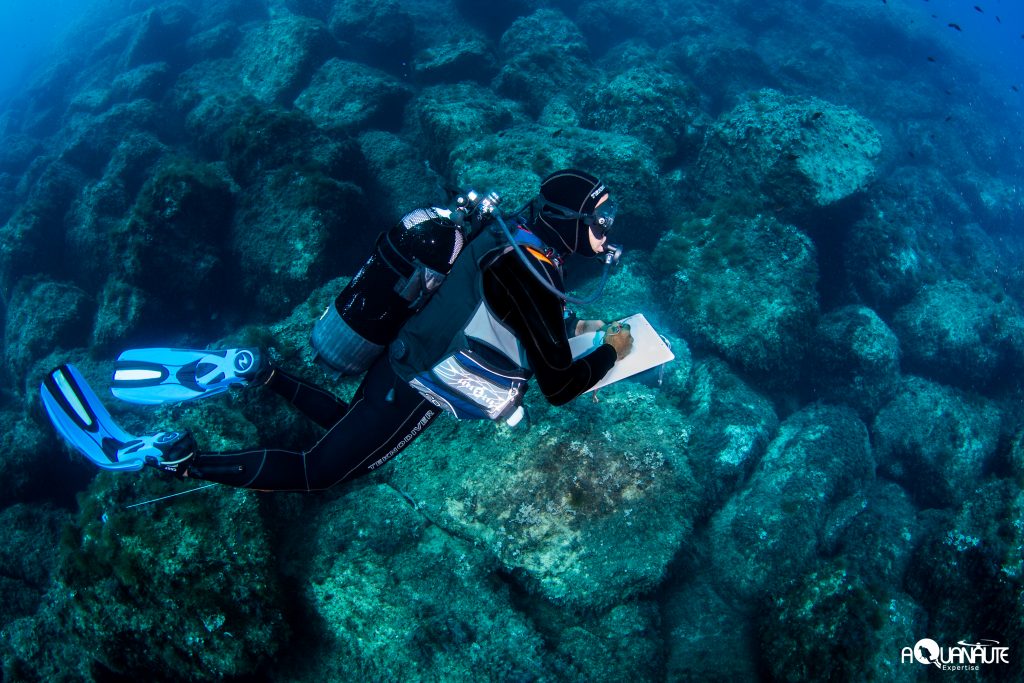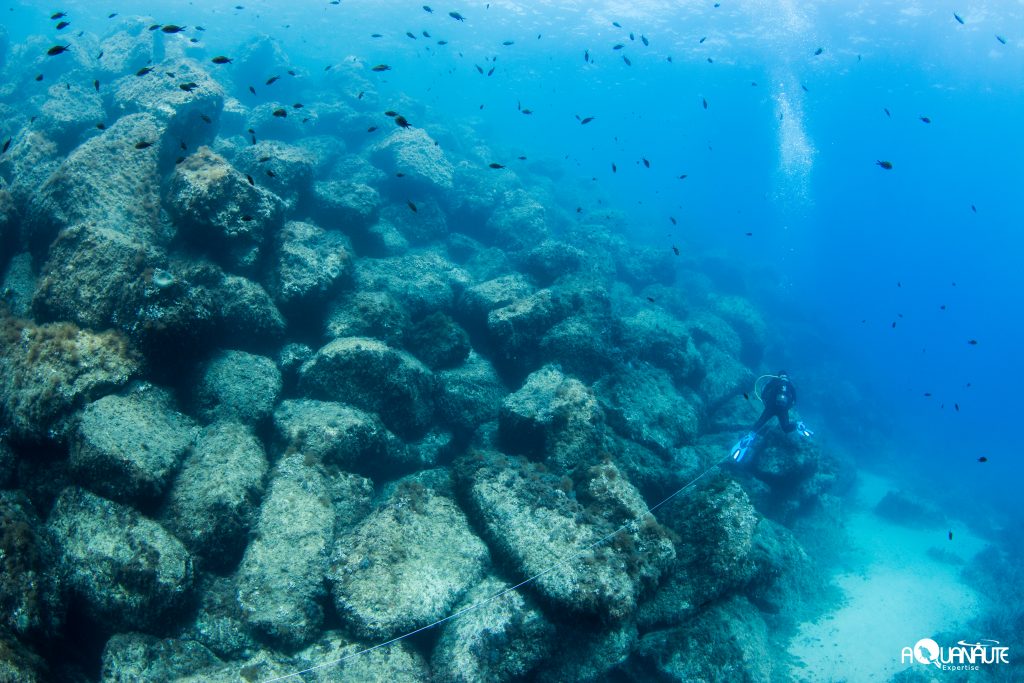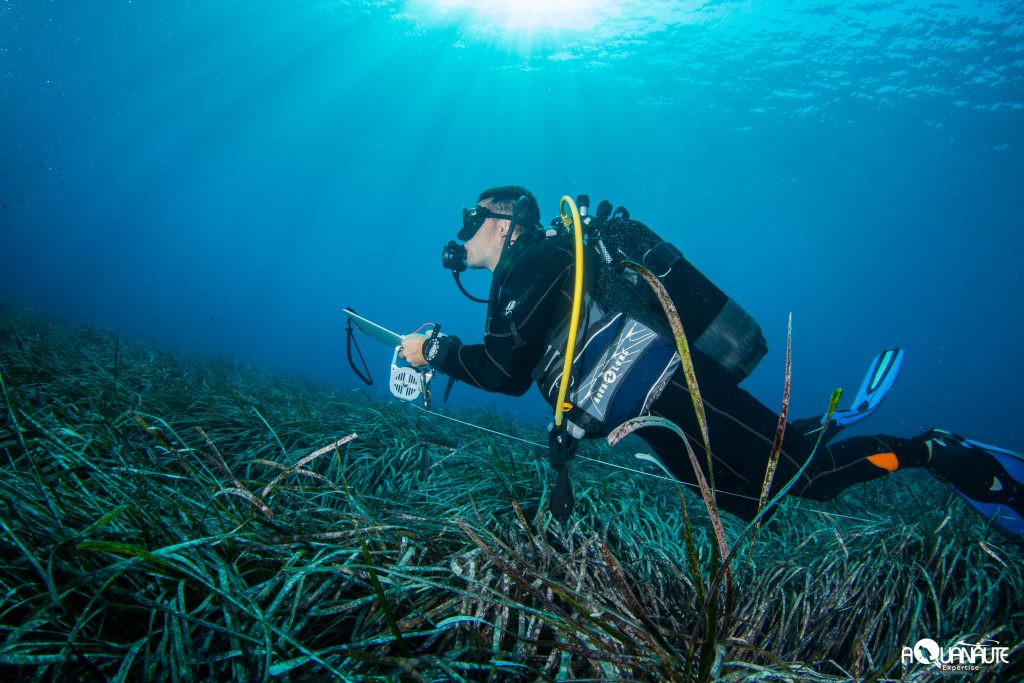For the third year in a row, the Association Monégasque pour la Protection de la Nature (AMPN) chose THALASSA Marine research to carry on the field work to assess the effectiveness of the Marine Protected Area (MPA) of Larvotto in Monaco and integrate the monitoring of Spélugues.
For an MPA to reach its objectives on fisheries management and biodiversity conservation, certain prerequisites need to be met (e.g. regulation fishing activities; effective surveillance). The Larvotto MPA has met these criteria: (1) it is a no-take zone, i.e., an area where all extraction activities are forbidden; (2) has a high level of surveillance, mainly thanks to local autorities (Division de Police Maritime et Aéroportuaire de Monaco, la Direction des Affaires Maritimes de Monaco) and the AMPN in its capacity as manager of the MPA.
This annual survey was dedicated to monitoring fish assemblages inside and outside MPA’s boundaries on two habitats: the Posidonia oceanica meadows and breakwaters. The survey is carried out through underwater visual censuses by scuba diving along transects adapted to the habitats studied. In addition to the sites inside the MPA, external sites were also surveyed (St-Jean-Cap-Ferrat, Beaulieu, Cap Martin and Menton) in order to assess whether the Larvotto MPA is meeting their conservation goals.
For the first time, visual censuses were carried out in the Spélugues MPA to find out the state of fish populations in this MPA confined between Port of Hercule and the Mareterra sea extension project.
Link to the AMPN website : www.ampn-nature-monaco.com/poursuite-de-letude-de-leffet-reserve/
Photo by Stéphane JAMME (Aquanaute expertise)


